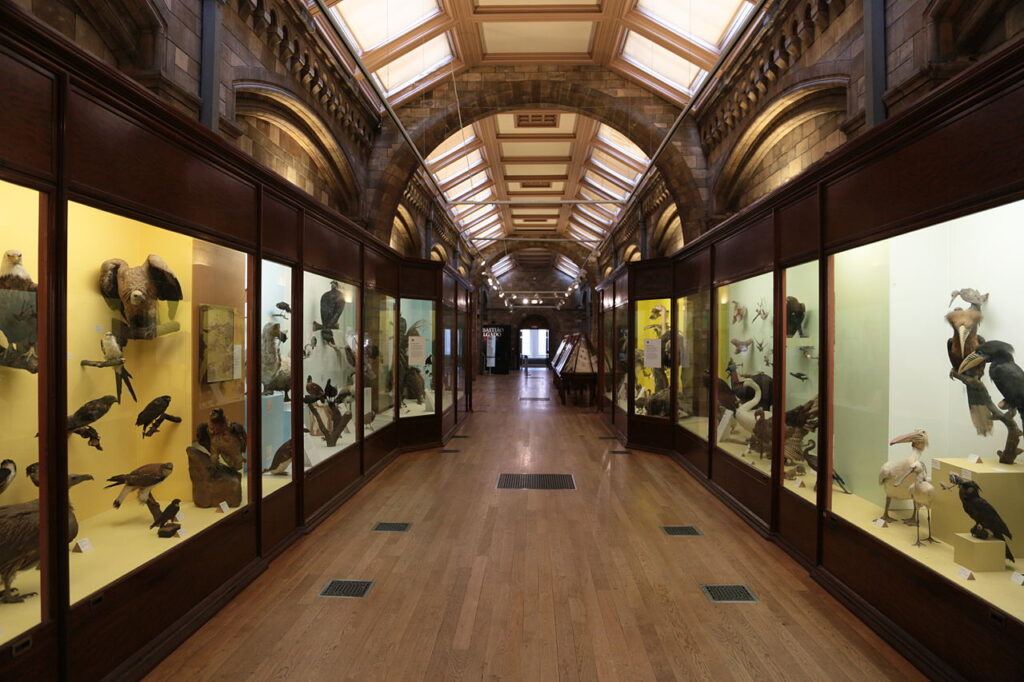As learned from class, a museum is basically a non-profit organization, that is both organized and permanent, with educational or aesthetic purposes in collecting tangible objects (i.e., collections). Not only do museums store and care for their collections but they also display parts of these objects to the public on a regular schedule. Museums, in a sense, are storage places for a multitude of collections that were historically stolen from an environment or culture by explorers of new lands. Despite many museums having such a controversial past, `there are many ways in which museums could use it as a way of guiding regulations for the collection and storage of artifacts or specimens. Historically, museums did evolve to become a place to showcase colonialism via exhibits for casual amusement – such as the cabinet of curiosities being used to display other cultures not understood as inferior; thus, giving individuals and institutions the power to control the narrative of the natural world.
As far as personal experiences with museums go, I do not have many experiences with museums only having visited two museums – with the first one being the Anchorage Museum and the second being the MOPOP Museum in Seattle, WA. My experiences with these two museums have left me with the impression that museums, despite their controversial origins and past, are capable of adapting and changing the museum experience to one that is, as stated in this module, “within the natural and cultural context of the place of source and descendant communities.” From what was learned in class and my personal experiences, the ideal museum is an institution wherein researchers, students, and the public can learn to understand and appreciate the native cultural values of their locality. Although this is already implemented in most museums, it would also be ideal if museums can continue this ideal while maintaining their collections in a way that does not incur more storage of artifacts or specimens than necessary. The modernization of the cabinet of curiosities in museums has also allowed for creators of the original objects displayed in museums to be the ones conversing the stories – not individual collectors or institutions. Shifting in the powers and equality of narratives for collections in museums can also help researchers, students, and the public to gain a far better understanding of local native cultures without colonialism biases clouding cultural data.
Museums can be defined in multiple ways and my definition of a museum is only one of many. Although, because of my personal experiences, my definition of a museum is definitely more central to the cultural understanding of native cultural heritages. My question for my fellow classmates is how have museums and their existence affected your perspective of the cultural world around you?

A photograph of the birds collection at the Natural History Museum in London (one of my favorite museum and on my bucket list to visit).
Thanks for your post Rose – your concern about the continual growth of the size of collections is one shared by many in the profession and something are constantly discussing. I hope we can come back to this idea when we consider how and why we shape our collections at museums. I’m also glad you recognize the adaptability of museums – while it’s not something that is a universal yet, most museums realize that the modern people who visit and use museums have a different goal in mind than those of the 18th and 19th centuries and are working to update their missions. We’ll talk a lot about this throughout the course!
Really interesting perspective Rose! Growing up as an only child, my parents often brought me to museums that had family-friendly educational components. People can utilize museums in so many ways – for research, for a rainy day activity, for family fun. Museums started as a kind of ‘fun activity’ space and as I grew older they became places to dive deeper into topics that I was interested in. I remember my parents taking me to the New England aquarium after the movie “Finding Nemo” came out. They were trying to show me that the fictional characters were actually real fish to be learned about!